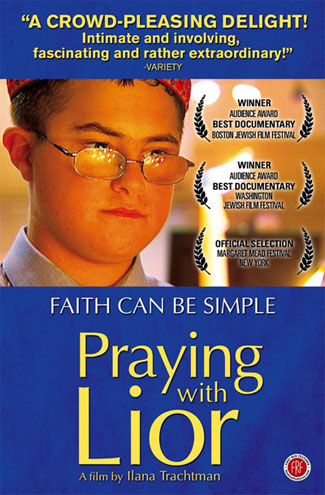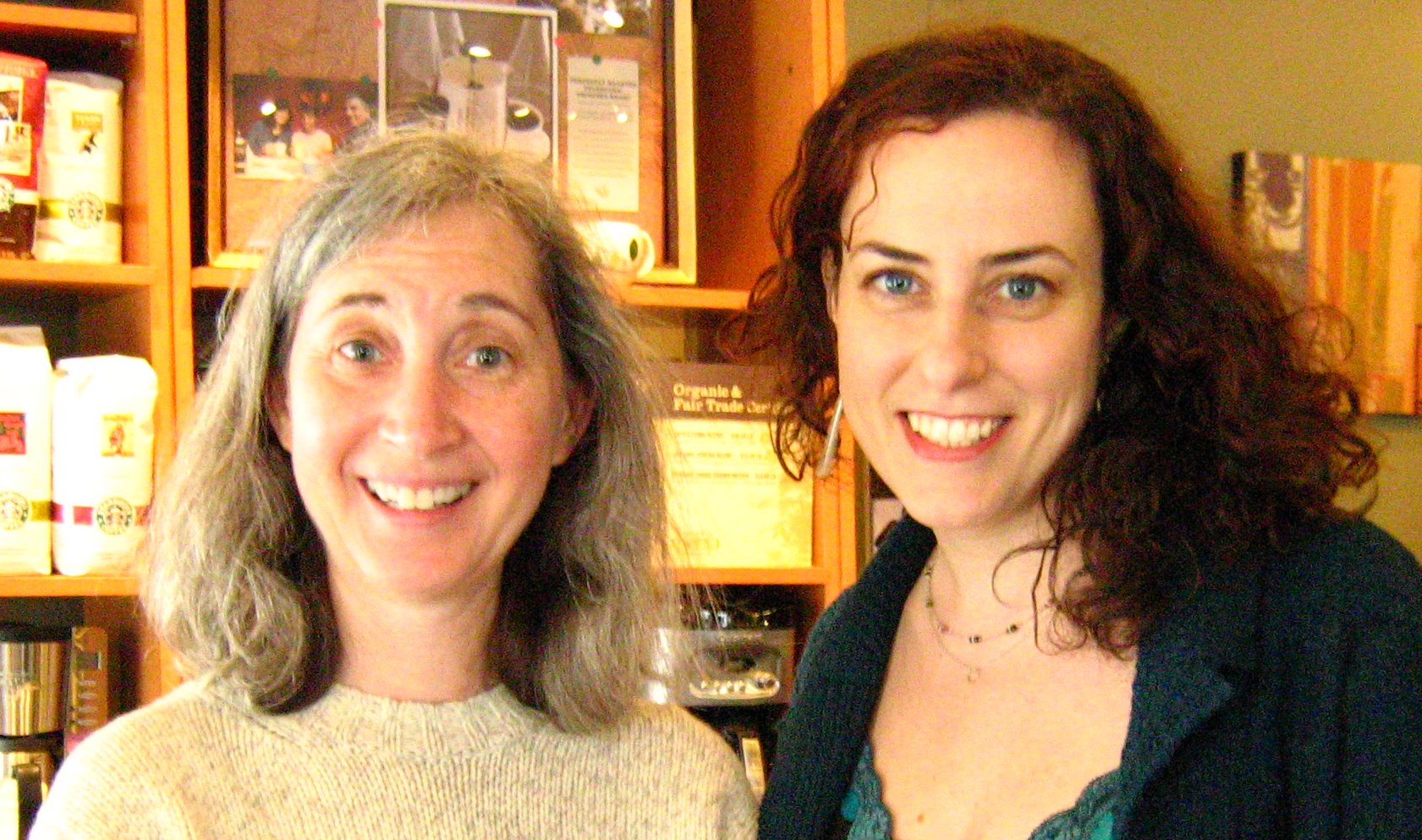Interview with Ilana Trachtman, director of “Praying with Lior”
Posted on March 22, 2008 at 8:00 am
Ilana Trachtman found the subject of her documentary, “Praying with Lior,” at Rosh Hashanah services. Lior has Down syndrome. His devotion to prayer has inspired the members of his close and loving Jewish community in Philadelphia. But the movie is not just about him. It is the story of a family.
Trachtman was a successful director of television programs . Her work was meaningful and satisfying and she was not looking for an independent film project.
What happened?
I prayed with Lior, that’s what happened to me. I was feeling estranged from prayer and went to a Rosh Hashanah retreat. The morning service was very long. I was counting the pages, thinking of what we would eat when services were over. It was literally like hearing a call. Behind me there was this off-key but consistently engaged and enthusiastic voice. I was really compelled because I had never seen anyone like Lior in services before. I grew up in a huge synagogue that never had anyone like Lior.  The struggle I had with prayer, this person with half my IQ seemed so natural. I was filled with curiousity and envy. This was in the fall. His bar mitzvah was in May. I needed to get started quickly.
The struggle I had with prayer, this person with half my IQ seemed so natural. I was filled with curiousity and envy. This was in the fall. His bar mitzvah was in May. I needed to get started quickly.
How did you get the permission of the family?
I expected I would have to do a lot of explaining, but when I started talking, Lior’s father said, “We’ve always wanted to do a documentary about the bar mitzvah.” That same spirit of generosity pervaded the entire experience. It was one miraculous moment after another on every level, a very b’shert (destined) experience all the way along.
I was surprised that you were able to shoot in the synagogue during a service. At the end of the movie there is a fascinating but brief reference to the discussions you had to make that possible. Can you tell me more about that?
The Reconstructionist approach is values-based decision-making. They have the power to evaluate in light of competing values. In this case there was the value of keeping the Sabbath and the value of Tikkun Olam (healing the world). Because this movie could be a model for other congregations of what is possible, the value of Tikkun Olam was the reason for allowing it to be made.
Also, there was a protected space in the sanctuary for people who did not want to worry about appearing in the film. The cameras were set up so that there was no way they could film in that section. Everything was thoroughly discussed and people knew what they were walking into.
Lior’s mother, a rabbi who died when he was five years old, is a very vibrant presence in the film. What made you decide to make her so much a part of the story?
I teach documentary film-making and if a student came to me with the idea of making a movie about Lior’s bar mitzvah I would have said, “That’s a photo essay, not a movie.” But when I came across the article that Lior’s mother wrote about him when he was just a small child, where she looks forward to his bar mitzvah and hopes she will be around to see it, that is when the movie fell together. That’s her sister reading the article aloud. I looked at actresses to do the voice but the sister did it best.
And the family movies added a lot. These were just home movies like anyone else’s. The movie at the beach was made by Reena. It looks like any family’s home movies of a trip to the beach. It is the context that makes it so moving.
 What do you hope for from this movie? What do you want people to take from it?
What do you hope for from this movie? What do you want people to take from it?
I have a social change agenda. The movie is creating a dialogue. I don’t want people to go home and say, “I saw a good movie.” I want them to say, “Why don’t I get to pray with Lior?” “Who are the Liors in my community?” “Who is missing?” There is a loophole in the Americans with Disabilities Act. It does not apply to places of worship. Bimas need ramps and lifts. Judaism has a history of disability in our forefathers. Jacob had a limp as a result of his wrestling with the angel who gave him the name Israel. Our name, the name of our people is caught up in the moment of disability. Moses had a speech impediment. But what accommodations do our houses of worship make for those with disabilities? This is definitely a transfaith issue. There are very few prayerbooks in Braille, very few places equipped with assistive listening devices or sign language interpreters.
I recently heard of a boy with cerebral palsy who cold not speak but used a DynaVox. So how could he “read” from the Torah? The Dynavox was programmed by a techno-linquist with a Hebrew interface so he could become a bar mitzvah. Another kid with autism became a bar mitzvah.
My argument is not that it is the right thing to do for them but that it is the right thing to do for us. It is the highlight of our own spiritual lives to share with and learn from these members of our communities.
